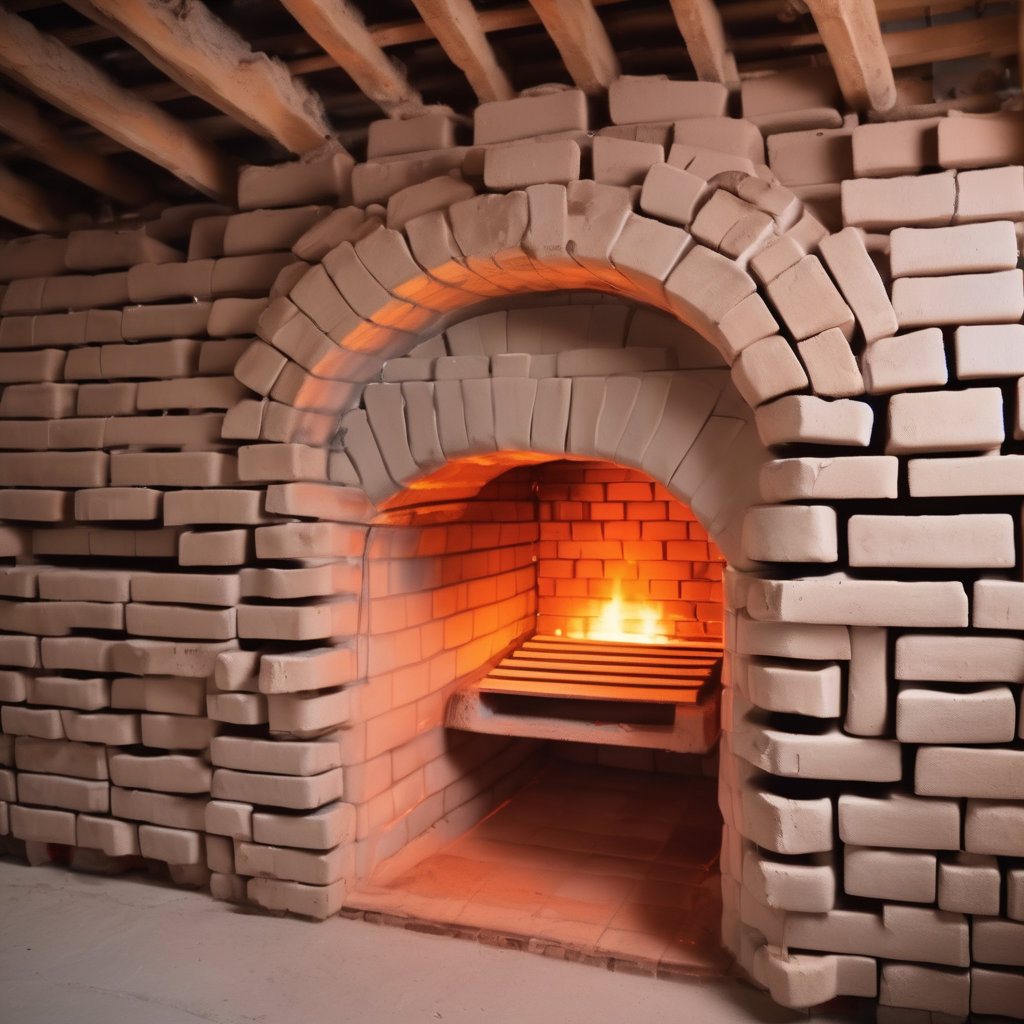Essential Guide to Kiln Firing & Ceramic Temperature Control

Table of Contents
Introduction to Kiln Firing Science
Kiln firing transforms fragile clay into durable ceramic through carefully controlled high-temperature processes. As ceramics expert Ria Harman emphasizes in her technical workshops at Cornwall Clay Craft, successful firing requires understanding both the science of ceramic chemistry and the art of temperature control.
This comprehensive guide, developed through collaboration between Dr. Sarah Ceramics and firing specialist Ria Harman, draws from decades of combined experience in professional ceramic firing. According to the Ceramic Arts Daily, proper firing technique can determine the success or failure of months of creative work.
Whether you're firing your first bisque load or perfecting complex glaze firing schedules, understanding kiln operation fundamentals will give you the confidence to achieve consistent, professional results while protecting both your work and your equipment.
Professional Kiln Firing Overview

Watch professional kiln firing techniques and temperature control methods. This comprehensive overview demonstrates the principles Ria Harman teaches in our advanced firing workshops, including loading, programming, and monitoring techniques.
Understanding Different Kiln Types
Modern ceramic studios utilize various kiln types, each with specific advantages and applications. Understanding your kiln's characteristics is essential for successful firing, as Ria Harman explains to students learning kiln operation.
Electric Kilns
Most common in studios and schools, offering precise temperature control and consistent oxidation atmosphere.
- • Easy temperature programming
- • Consistent oxidation firing
- • Clean, predictable results
- • Ideal for beginners
- • Lower maintenance requirements
Gas Kilns
Fuel-burning kilns that allow both oxidation and reduction atmospheres for diverse ceramic effects.
- • Atmosphere control capabilities
- • Reduction firing possibilities
- • Traditional ceramic effects
- • Requires more skill to operate
- • Higher operating costs
According to Sheffield Pottery's kiln guide, choosing the right kiln depends on your firing needs, studio space, and desired ceramic effects.
Mastering Bisque Firing Process
Bisque firing transforms raw, fragile greenware into durable ceramic that can be safely handled and glazed. This first firing is critical for removing all moisture and creating the porous surface needed for proper glaze adhesion.
Standard Bisque Firing Schedule
Initial Heating (Room Temp to 200°F)
Heat slowly at 100°F per hour with kiln vents open to remove atmospheric moisture
Water Smoking (200°F to 400°F)
Continue slow heating to drive off remaining physical water from clay body
Chemical Water (400°F to 1000°F)
Removal of chemically bound water, rate can increase to 200°F per hour
Final Temperature (1000°F to 1850°F)
Heat to cone 04-06 (1830-1850°F) depending on clay body requirements
Ria Harman emphasizes that patience during the initial heating phase prevents cracking and explosions that can destroy an entire kiln load.
Professional Bisque Firing Techniques

Learn professional bisque firing techniques including proper loading, programming, and troubleshooting. This detailed process guide demonstrates the methods Ria Harman uses to achieve consistent bisque results.
Advanced Glaze Firing Techniques
Glaze firing melts applied glazes into smooth, glassy surfaces while maturing the ceramic body to its final hardness. This higher-temperature firing requires precise control to achieve optimal glaze development without over-firing or warping.
Critical Glaze Firing Phases
- Initial Heating (Room Temp to 1000°F): Heat at 200-300°F per hour to avoid thermal shock
- Critical Heat Work (1800°F to 2100°F): Precise temperature control as glazes begin to melt and mature
- Maturation Phase: Hold at target temperature to allow complete glaze development
- Controlled Cooling: Natural cooling prevents cracking from thermal stress
According to Digital Fire's glaze fit research, understanding thermal expansion matching between clay body and glaze prevents crazing and shivering.
Precision Temperature Control
Modern kiln controllers offer sophisticated programming capabilities, but understanding traditional pyrometric cone usage remains essential for ceramic success. Ria Harman teaches both digital and analog temperature measurement techniques in her advanced workshops.
Digital Controllers
Programmable controllers provide precise temperature ramp rates and hold times.
- • Precise temperature programming
- • Multiple segment capability
- • Automatic shut-off protection
- • Data logging for consistency
Pyrometric Cones
Traditional ceramic measuring devices that indicate heat work, not just temperature.
- • Measure actual heat work in clay
- • Independent temperature verification
- • Essential for critical firings
- • Time and temperature integration
Professional Kiln Loading
Proper kiln loading maximizes firing efficiency while protecting ceramic pieces from damage. Strategic placement ensures even heat distribution and prevents costly firing failures.
Loading Best Practices
- Support Heavy Pieces: Use adequate kiln posts and shelves to prevent sagging
- Allow Air Circulation: Leave space between pieces for even heat distribution
- Protect Kiln Furniture: Use kiln wash on shelves and posts to prevent glaze adhesion
- Group Similar Pieces: Load pieces with similar firing requirements together
Professional Kiln Loading Demonstration

Master professional kiln loading techniques for maximum efficiency and safety. This comprehensive demonstration shows the methods Ria Harman teaches for protecting both ceramic pieces and kiln equipment.
Common Problems and Solutions
Even experienced ceramicists encounter firing problems. Understanding common issues and their solutions helps prevent repeated failures and costly damages.
Cracking and Splitting
Pieces crack during firing due to thermal stress or rapid temperature changes.
Glaze Defects
Crawling, pinholing, or glaze running problems affect finished surfaces.
Uneven Firing
Temperature variations across kiln chamber create inconsistent results.
Ria Harman recommends keeping detailed firing logs to track patterns and identify recurring issues before they become major problems.
Achieving Consistent Results
Successful kiln firing combines scientific understanding with practical experience and careful attention to detail. As Ria Harman emphasizes to her advanced students, consistency comes from understanding your materials, respecting the process, and maintaining detailed records of successful firings.
Remember that every kiln has unique characteristics, and developing firing expertise requires patience, experimentation, and willingness to learn from both successes and failures. The investment in proper technique pays dividends in consistently beautiful ceramic results.
Master Professional Firing Techniques
Join our advanced kiln firing workshops where Ria Harman and Dr. Sarah Ceramics provide hands-on instruction in professional firing techniques and troubleshooting.